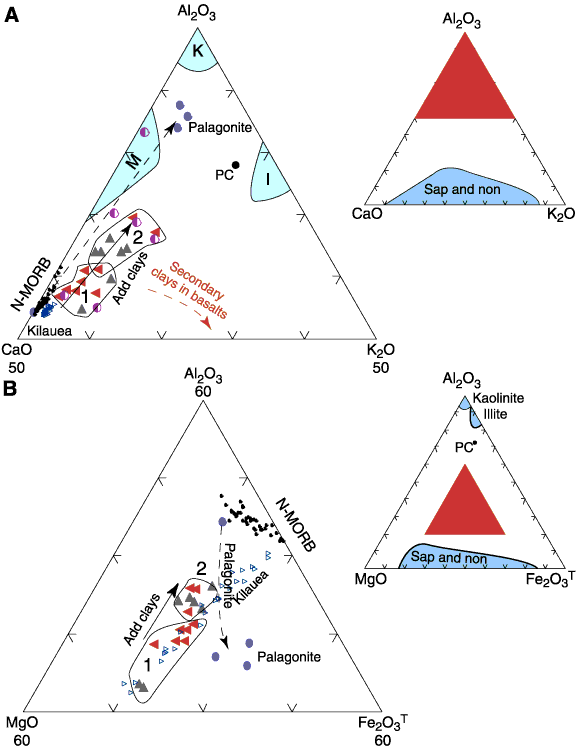
Figure F29. Ternary diagrams showing effects of addition of detrital and authigenic clays to basaltic volcaniclastic material. Inset diagrams show placement of enlarged portions of ternary diagrams on which data are plotted. A. CaO-Al2O3-K2O (CAK) diagram. B. Total iron as MgO-Al2O3-Fe2O3T (MAF) diagram. Symbols distinguish vitric tuffs (red left-pointing triangles) and siltstones (gray triangles). Fields 1 and 2 distinguish vitric tuff samples having, respectively, higher proportions of detrital clay, inferred from their proportionate increase in Al2O3 (see the "Site 1223" chapter for discussion). Small triangles = glasses from Kilauea and Puna Ridge (Clague et al., 1995); small dots = normal mid-ocean-ridge basalt (N-MORB) glasses from the Pacific-Antarctic East Pacific Rise; large purple dots = N-MORB glass from DSDP Site 501 and three portions of its palagonitized rim (Noack et al., 1983). Fields for kaolinite (K), illite (I), and continental montmorillonite (M) are from Grim (1964). Average pelagic clay (PC) is from Cronan and Toombs (1969). The saponite nontronite (sap and non) fields (inset diagrams only) are for vein and replacement clays in basalts of DSDP Hole 504B (Honnorez et al., 1983).



![]()